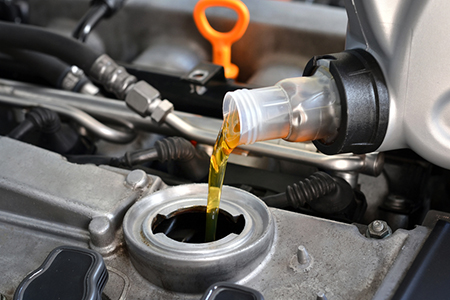(TNS)—If you’re still changing your engine oil every 5,000 miles, or even 3,000 miles, then you may just be flushing money.
Most new vehicles sold today can go at least 7,500 miles between oil changes, and sometimes more than 10,000, says Mike Calkins, technical services director for the AAA travel services organization.
Calkins lists two key reasons most new vehicles can last far longer between oil changes. Many use synthetic oil or a blend of synthetic and conventional oils that maintain their lubricating properties longer, and most late-model vehicles come with oil life monitors that signal when it’s time for fresh oil based on how the car is driven instead of mileage or time.
Some oil life monitors are based solely on mileage (the type of monitoring system should be explained in the owner’s manual), but most current systems do much more.
“The more sophisticated systems take into account the number of cold starts, outside temperature, average engine temperature, vehicle speed, and a whole range of other operating parameters. There’s an algorithm that calculates oil life based on those, and they’re quite accurate,” he says.
Mercedes-Benz, for example, uses full synthetic oil, and some owners have reported that the oil life monitor didn’t call for an oil change until 15,000 miles, Calkins says. On General Motors vehicles, most of which use a synthetic blend, surveys have shown that under normal driving the monitor will typically call for an oil change every 7,000 to 8,000 miles, but with mainly highway driving it can stretch to 10,000 miles.
Towing puts more stress on the engine and the oil inside it, and the monitor may signal a need for new oil every 5,000 to 6,000 miles. Towing falls under what auto manufacturers refer to as “severe service” that calls for more frequent oil changes and other routine maintenance. Frequent short trips and cold engine starts also qualify as severe.
“With these oil life monitors, it is absolutely essential that the vehicle owner use an oil that meets the manufacturer’s specifications,” Calkins says. “Those systems are calibrated based on using oil that meets certain standards. Toyota says if you use full synthetic oil, it’s a 10,000-mile oil change interval. Toyota also says that if you use a semi-synthetic or conventional oil, the oil change interval is 5,000 miles.”
In addition, the oil has to be the correct viscosity (such as 5W20) and “service classification” set by the manufacturer and certified by the American Petroleum Institute.
Every oil isn’t suited for every engine, and using the wrong oil can even void the engine warranty. How do consumers know they’re getting the right oil?
Calkins says to choose a quality repair shop that shows customers it uses the correct oil for a particular vehicle. “Another way is to educate yourself and get out the least-read book in history, the owner’s manual. Turn to those boring pages in back that list the specifications and find out what your car is supposed to use.”
The owner’s manual also will recommend intervals for oil changes and other maintenance.
For those who drive only 6,000 miles or less per year, Calkins says manufacturers typically recommend changing the oil once a year. Moisture and other contaminants can build up in the oil, especially with frequent cold starts and short trips, so owners shouldn’t let it go more than a year.
With synthetic oil and synthetic blends more common today, Calkins says many vehicles no longer qualify for $20 to $30 oil changes. Instead, the cost often is in the $60-$70 range. That means that frequent oil changes, long regarded as “cheap insurance,” aren’t as cheap as they used to be.
©2016 Chicago Tribune
Distributed by Tribune Content Agency, LLC.




